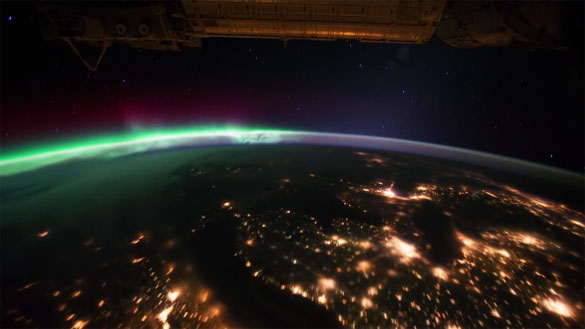Time lapse video from the International Space Station
The video above is comprised of a series of time lapse images taken from the International Space Station over the late summer of this year, then edited and set to music. The camera, known as the “Super Sensitive High Definition TV” or SS-HDTV, works in extremely low light situations, and has managed to capture some detailed visuals of the planet. Whether it’s natural phenomena such auroras and lightning storms, or the vast electrical grid that we as humans have covered the planet with, the footage is nothing less than stunning.
Read More

